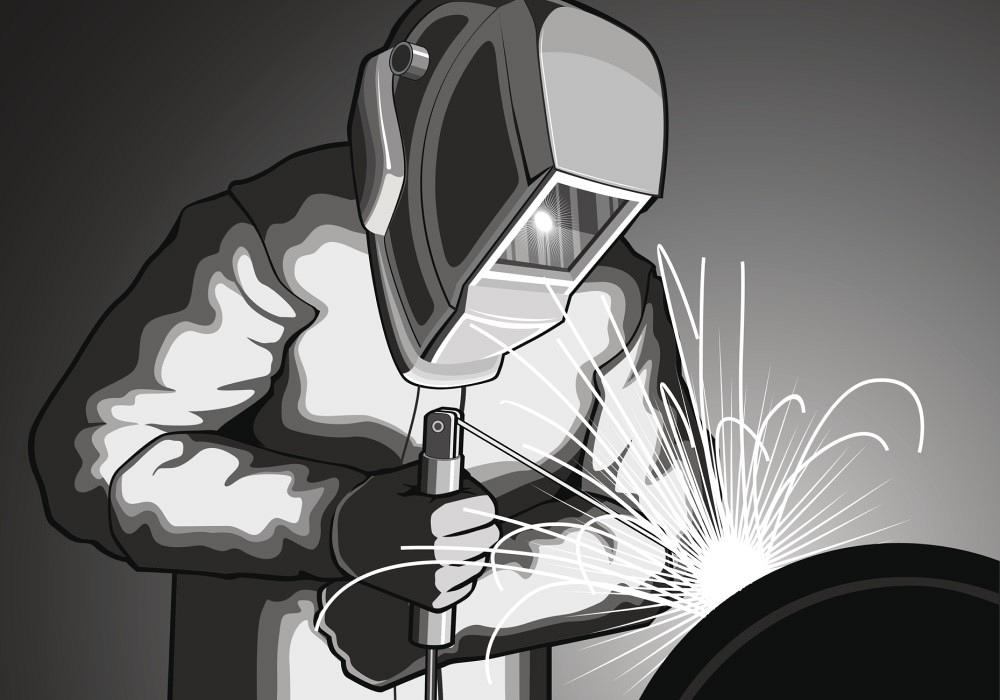Achieving Welding Quality: Unveiling the Secrets of WPS Execution and Optimization
In the realm of welding, attaining quality is a pursuit that pivots on the careful application and optimization of Welding Procedure Requirements (WPS) By delving right into the crucial elements, approaches, difficulties, and best techniques linked with WPS, a globe of welding excellence waits for those who are eager to explore its midsts.
Importance of WPS in Welding
The Importance of Welding Treatment Requirements (WPS) in the welding industry can not be overemphasized, serving as the foundation for guaranteeing uniformity, high quality, and safety and security in welding operations. A WPS gives in-depth instructions on exactly how welding is to be carried out, including vital variables such as materials, welding processes, joint layout, filler metals, interpass and preheat temperatures, welding currents, voltages, traveling speeds, and a lot more. By adhering to a well-defined WPS, welders can keep uniformity in their job, resulting in regular weld quality throughout various projects.

Trick Components of WPS
Talking about the essential components of a welding treatment spec (WPS) is necessary for understanding its duty in welding operations. A comprehensive WPS consists of several crucial elements that guide welders in attaining top quality and uniformity in their work. One critical element of a WPS is the welding process requirements, which describes the details welding processes to be made use of, such as gas tungsten arc welding (GTAW) or protected metal arc welding (SMAW) Furthermore, the WPS consists of information on the welding materials, such as the type and specifications of the base steel and filler metal to be used. The WPS likewise defines important variables like welding criteria, preheat and interpass temperature level requirements, and post-weld warm treatment procedures. Additionally, it includes information on joint style, fit-up, and any kind of special methods or precautions required for the welding procedure. By integrating these key components into the WPS, welding procedures can be standard, guaranteeing quality, efficiency, and safety in welding procedures.
Strategies for WPS Optimization

Second of all, training and credentials of welding personnel according to the certain needs of the WPS is paramount. Supplying extensive training programs and ensuring that welders are accredited to implement procedures outlined in the WPS can result in greater quality welds and decreased rework.
In addition, leveraging technology such as welding software application and surveillance systems can assist in optimizing WPS. These tools can help in monitoring variables, making certain parameters are within specified limits, and offering real-time responses to welders, allowing them to make prompt changes for boosted weld quality.
Typical Difficulties and Solutions
Dealing with challenges in carrying out the approaches for WPS optimization can prevent welding procedures' performance and top quality. One usual obstacle is poor training or understanding of the welding treatment requirements (WPS) amongst the welding group. This can cause incorrect implementation of welds, leading to flaws and remodel. To address this, extensive training programs ought to be executed to ensure that all welders excel in interpreting and using WPS properly.
Another challenge is the absence of appropriate documentation and record-keeping, which is important for WPS optimization. Without clear documents of welding criteria, materials used, and examination outcomes, it ends up being difficult to identify locations for renovation and ensure uniformity in welding procedures. Applying a durable documents system, such as electronic welding monitoring software application, can help streamline record-keeping and promote information evaluation for constant improvement.
In addition, irregular welding devices calibration and upkeep can position a significant obstacle to WPS optimization. Normal devices checks, calibration, and maintenance timetables must be stuck to purely to guarantee that welding criteria are precisely controlled and kept within the specified resistances (welding WPS). By dealing with these typical challenges with proactive remedies, welding article source procedures can boost efficiency, top quality, and total welding excellence
Ideal Practices for WPS Implementation
To make sure effective WPS implementation in welding operations, adherence to market criteria and meticulous interest to information are extremely important. When initiating WPS application, it is critical to start by thoroughly comprehending the certain welding needs of the project. This entails a detailed testimonial of the welding procedure specs, products to be bonded, and the ecological problems in which the welding will certainly occur.
Once the demands are clear, the next step is to choose the proper welding treatment that straightens with these requirements. This involves consulting the relevant codes and standards, such as those offered by the American Welding Society (AWS) or the International Organization for Standardization (ISO), to guarantee compliance and high quality.
In addition, recording the additional resources entire WPS execution procedure is important for traceability and quality assurance. Detailed records should be kept relating to welding parameters, product preparation, preheat and interpass temperatures, welding consumables utilized, and any kind of variances from the initial treatment. Routine audits and reviews of the WPS can help identify locations for renovation and make certain ongoing optimization of the welding process.


Final Thought
To conclude, the implementation and optimization of Welding Procedure Specs (WPS) is vital for accomplishing welding quality. By understanding the essential aspects welding WPS of WPS, applying effective methods for optimization, dealing with usual challenges, and adhering to finest techniques, welders can make certain premium welds and risk-free working problems. It is vital for professionals in the welding industry to focus on the proper implementation of WPS to improve total welding efficiency and attain desired outcomes.
The Importance of Welding Procedure Specifications (WPS) in the welding sector can not be overemphasized, serving as the backbone for guaranteeing uniformity, top quality, and safety and security in welding procedures. A WPS provides in-depth instructions on just how welding is to be brought out, including crucial variables such as products, welding processes, joint style, filler steels, interpass and preheat temperatures, welding currents, voltages, traveling speeds, and a lot more. One important element of a WPS is the welding procedure spec, which lays out the certain welding processes to be made use of, such as gas tungsten arc welding (GTAW) or protected metal arc welding (SMAW) By incorporating these vital components into the WPS, welding treatments can be standard, making certain quality, performance, and safety and security in welding operations.
It is imperative for experts in the welding market to focus on the correct application of WPS to boost overall welding performance and accomplish preferred end results.